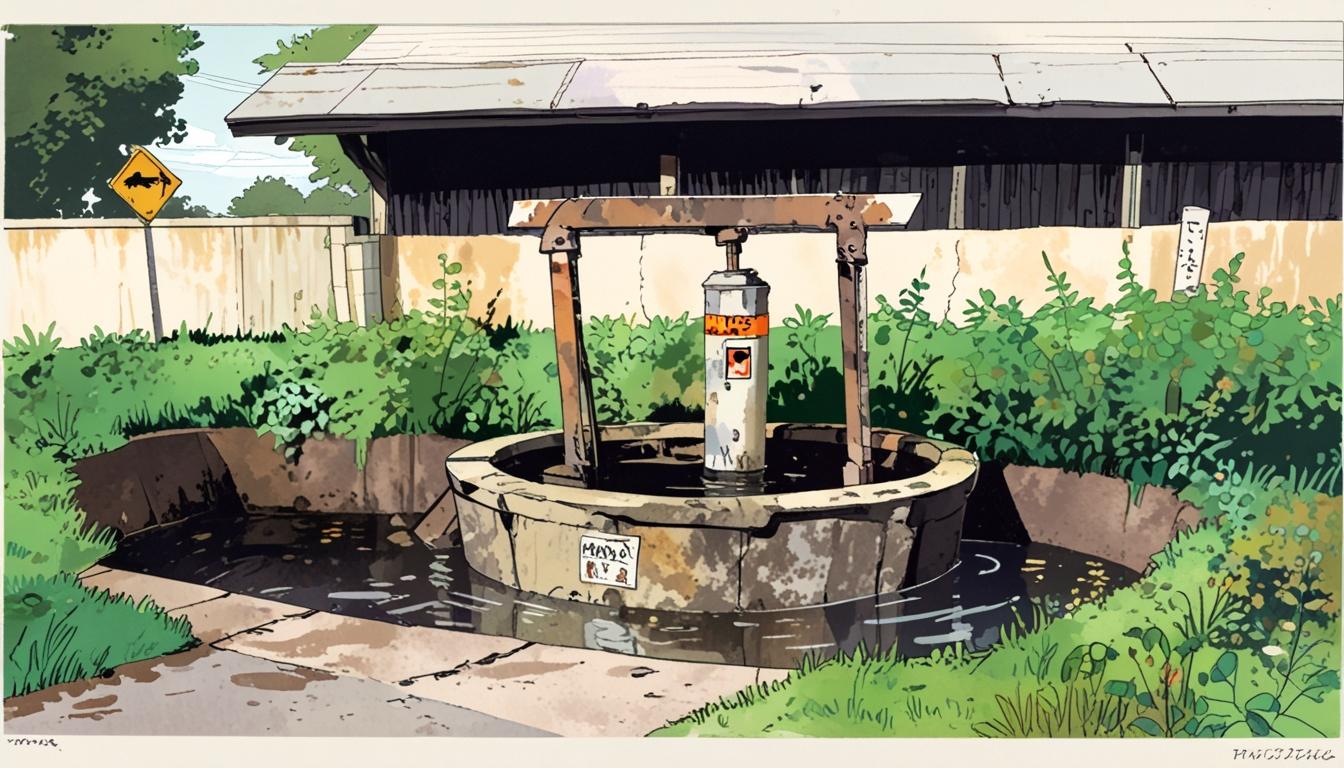LAMBERTVILLE — Residents of Connaught Hill, a historically underserved community in Lambertville, New Jersey, are confronting a new environmental health crisis as high levels of per- and polyfluoroalkyl substances (PFAS), known as “forever chemicals,” have been detected in 71 of 74 private wells tested in the area. These toxic compounds, used widely since World War II in consumer products such as nonstick cookware and food packaging, have been linked by scientific studies to serious health issues including cancer, birth defects, and ulcerative colitis.
The recent discovery of PFAS contamination has deeply unsettled the inhabitants of this small enclave, which sits atop the Delaware River and was once described by former First Lady Lady Bird Johnson during a 1964 visit as “a place of tar paper shacks, dirt roads and outdoor toilets.” The community has a diverse history, having been home to descendants of enslaved people, immigrant labourers, and working-class families. It has long been perceived as a neglected area within Lambertville.
Residents have been forced to rely on bottled water for over eight months and many have invested in home water filtration systems to mitigate the risk of exposure. The situation is compounded by health anxieties among locals, with reports of illnesses such as testicular and pancreatic cancer, as well as intestinal diseases, afflicting people of all ages. “We’re just so upset — PFAS contamination has been linked to diseases we know are prevalent right here in our little community,” said Shaun D. Ellis, a longtime resident and library software engineer. “Things like testicular cancer, pancreatic cancer, liver cancer, ulcerative colitis… we’re talking not just older adults but minors as well.”
Karen Atwood, a grandmother and cancer survivor living on the hill with three generations of her family, expressed her distress upon learning of the contamination in her well. “My whole family, everyone up here, has been drinking this well water for their entire lives,” she said. “Now I worry, how did I get sick? I worry about the young people in my family, the children. I worry about this community, and I wonder, how did this happen?”
The contamination has also spread to neighbouring Cottage Hill. In response, the New Jersey Department of Environmental Protection (DEP) has scheduled further well testing in both communities, which span Lambertville and West Amwell Township.
Efforts to identify the pollution's source are ongoing but complicated. Historically, Connaught Hill has been the designated site for various undesirable land uses such as a town dump that remained unremediated for decades and a former industrial site where Teflon coating containing PFAS compounds was manufactured until the mid-1980s. The industrial facility, located at the now-closed Lambertville High School site, was investigated by the DEP in the late 1980s for chemical contamination; however, no PFAS testing was conducted at that time.
Local residents describe the landfill area as overgrown and littered with debris, and some have found remnants of discarded appliances, hazardous waste drums, and even an old buried automobile. Property owners near these sites have conducted well tests showing high PFAS levels and have installed filtration systems. “You never know what you might find in the ground,” said resident Rene McCormick.
Adding to the residents’ concerns is a proposed residential development plan to build approximately 200 homes in the area, which could include affordable housing units on or near historically contaminated sites. The developer, K. Hovnanian Homes, one of the largest homebuilders in the United States, has conducted preliminary environmental testing, but the city of Lambertville has not made related records public, citing ongoing legal considerations.
Mayor Andrew J. Nowick stated his concern for the affected community and assured that the city would support state-led testing efforts. He said, “We need to know where the heck this is coming from. We will continue to do everything in our power to protect the people here.” However, some residents contest claims that the city provides financial support for well testing, noting that residents have only been offered loans, which require income verification and impose liens on properties until repayment.
The initial public response to the PFAS findings was marked by frustration toward city officials. Several residents criticised Mayor Nowick for a delayed notification to the state environmental authorities, which was first initiated by James Cally, a councilman and former mayor of West Amwell Township. Cally remarked, “As soon as somebody mentions PFAS, it’s all hands on deck.”
Environmental advocates view the situation at Connaught Hill as emblematic of broader environmental justice challenges. Jeff Tittel, former head of the New Jersey Sierra Club, remarked, “What’s happening right here on this hill shows what our priorities really are. Landfills, recycling centres, ugly power lines, gas pipelines that no one else wanted — all of it has either been foisted on this one spot or planned for this site without the consent of the people who live here. Now we’re talking about a residential development on contaminated land where people can’t drink the water.”
Despite the community’s longstanding struggles, residents maintain a strong sense of solidarity. At a recent gathering on the village green, neighbours compared water tests and shared stories of living in Connaught Hill. “We were on the bottom of the barrel then, and I guess we’re still there,” said 73-year-old lifelong resident Rich Hindermeyer with a chuckle. “But we’ve learned to look out for each other.”
The Jersey Vindicator is reporting. Its investigative coverage highlights the layered history of environmental and social challenges facing Connaught Hill, as the community confronts both legacy pollution and new health risks amidst uncertain prospects for redevelopment.
Source: Noah Wire Services
